Previously, in Comics 101: When last we convened, we’d been in the midst of a discussion of the Keith Giffen /J.M. DeMatteis era of DC’s JUSTICE LEAGUE series, a run that smartly combined action with some of the sharpest wit mainstream comics had seen. About a year and a half into the series, it was decided some new blood was needed, and former Global Guardians Green Flame and Icemaiden (soon to be renamed “Fire and Ice”) were brought into the team. This, however, would be only a few of the big changes to come…
As the new JUSTICE LEAGUE INTERNATIONAL series continued to gain in popularity in 1988, readers may have begun to notice a clever pattern in how the series handled its mix of comedy and drama. It’s a little something I think of as “dramatic whiplash,” and Giffen and DeMatteis would use it time and time again in their JUSTICE LEAGUE books: keep things moving along at its usual brisk, wacky face for a few months, then, in the middle of one of your comedy storylines, do a complete 180-degree turn with a stunningly serious (and occasionally graphic) turn of events. The first example of this came in JUSTICE LEAGUE INTERNATIONAL #16-#17, by the usual team of Giffen, DeMatteis and Maguire.
The team is split, as J’onn takes Rocket Red, G’nort and Big Barda with him on an outer-space mission to recover the inadvertently kidnapped Mr. Miracle from Lord Manga, while Batman enlists Booster, Beetle and new member Green Flame on an undercover mission to Bialya, the Middle Eastern nation they’d earlier crossed swords with, to investigate a new secret weapon Bialya is about to unveil to scores of global dignitaries. As the story opens, it’s played mostly for laughs, with Batman in “disguise” as Bruce Wayne, and Beatriz “Green Flame” DaCosta as his ditsy arm-candy companion, while Booster and Beetle pose as Wayne’s two personal assistants, “Bharwarj” and “George Bailey.”
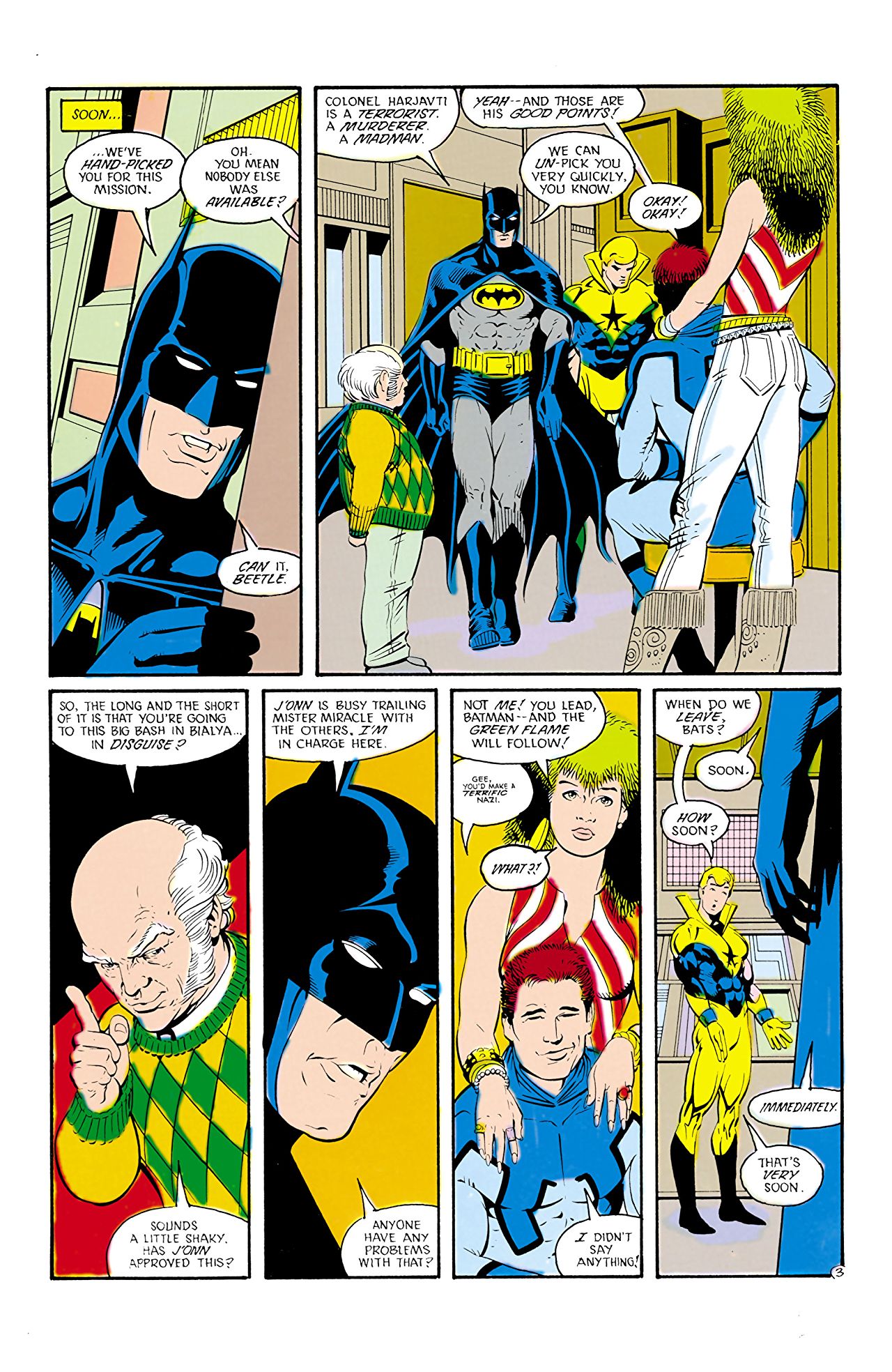 Just as Bea attempts to flirt with Batman (with little success), their cover is blown, and Batman instead attends the Bialyan bash as Maxwell Lord.
Just as Bea attempts to flirt with Batman (with little success), their cover is blown, and Batman instead attends the Bialyan bash as Maxwell Lord.
At the party, Bialyan dictator Rumaan Harjavti (a frequent but primarily laughable thorn in the League’s side by now) introduces his secret weapon that will ensure Bialya’s strength: Wandjina, the otherdimensional hero last seen in JUSTICE LEAGUE #3 preventing a Soviet nuclear reactor from melting down, and now, it seems, horribly scarred and mutated from radiation poisoning.
Even more shocking, Wandjina almost immediately turns on his master, murdering Harjavti with a disfiguring radioactive burn at the behest of Harjavti’s concubine, the new ruler of Bialya that the Justice League would come to know as the Queen Bee.
Eventually, Batman, Bea and the captured Booster and Beetle would escape Bialya with the help of a fighting-mad Captain Atom. However, this storyline would set up the next sudden shift in tone for the series, to come 10 issues later in JUSTICE LEAGUE AMERICA #26 (Attentive readers may notice the title has changed again. We’ll get back to that.), by Giffen, DeMatteis and new penciller Ty Templeton, in which an unsuspecting Blue Beetle, stuck on monitor duty at the New York embassy, takes a phone call and promptly heads right to the kitchen to fetch a butcher knife, with which he stabs Maxwell Lord and Oberon, critically injuring the little fellow and seriously wounding Max, who manages to get away, with a murderous Beetle in hot pursuit.
Only through the timely intervention of the Huntress (and later, Batman) is Blue Beetle prevented from murdering Max, and with the help of then-Suicide Squad honcho Amanda Waller, it’s discovered that, while a prisoner in Bialya, Beetle had been brainwashed with a post-hypnotic suggestion, a fact confirmed when Waller inadvertently repeats the code pharase, “Bialya, my Bialya,” while attempting to deprogram Beetle.
A second attempt by Waller to deprogram Beetle succeeds in unlocking his memories of the brainwashing process, but runs into another obstacle: a pre-programmed “azrael block” designed to prevent Beetle’s recovery, which immediately plunges him into what looks to be an irreversible coma. It’s only with the eventual assistance of Nabu, the entity formerly known as Dr. Fate, that Beetle is able to break through and return to the land of the living. (And in a smart but easily overlooked detail, when Nabu enters Beetle’s mind in an attempt to free him, Beetle’s image of himself isn’t dressed in his own Beetle uniform, but in the Blue Beetle uniform of his predecessor Dan Garrett, indicating how seriously Ted Kord takes his obligation to replace his mentor.)
However, in between these two fairly heavy stories, there was the usual amount of action and yuks, JUSTICE LEAGUE INTERNATIONAL-style. While Batman and company were in Bialya, J’onn J’onzz and his team, you may recall, were chasing Lord Manga in an attempt to get back the kidnapped Mr.,Miracle, a pursuit that led not only to one of the first appearances of the later-extremely popular uber-violent character Lobo, but also the return of the original head-bashing, insufferable, fight-first-and-ask-questions-never personality for Guy Gardner, as a bonk on the head during a scuffle with Lobo returns him to his old self.
In a strange turn of events, Lobo winds up zapped to Earth, where he takes up company with the rest of the League waiting for his chance to kill them all at once, while J’onn, Barda, G’nort and Rocket Red head for Apokolips, where Mr. Miracle is to be bartered back to Granny Goodness.
While all this is going on, it’s decided that the League needs to replenish its numbers, and a membership drive is soon underway. Superman and Flash are approached with little success, while Batman invites two other former Justice Leaguers to return:
Yes, what you see here is the beginnings of the last-ever appearances of the Silver Age Katar and Shayera, brought in for a brief but cool JL stint, memorable primarily for the spot-on characterization of Katar, constantly furious and at his wits’ end with the new, wisecracking version of the League, which must have seemed to him like being on a team with a half-dozen Green Arrows.
Katar and Shayera didn’t stay long, with Hawkman quitting the team in frustration after missions with the team on Apokolips and in Earth’s war with aliens during the big INVASION! summer crossover. (The JL writers also used the occasion of the INVASION! storyline to make several minor changes to their own characters, changing Fire’s firebreathing powers to a more formidable and dramatic “Human Torch”-style transformation, and giving Maxwell Lord a curious new power of mental persuasion –- perfect for a manipulator like Max –- which allowed him to momentarily “push” people into doing what he wanted, although using the power always gave him a telltale nosebleed.)
Following the INVASION! business, Maxwell Lord’s assistant Oberon decided to take advantage of all the superheroes running around to do a little more recruiting, as was seen in JUSTICE LEAGUE INTERNATIONAL #24, in “Across a Crowded Room…” by Giffen/DeMatteis and Maguire.
It’s an eventful gathering, as not only does Katar make his intentions to quit well known…
…but a bunch of invading alien Khunds who haven’t been told the war is over realize they’ve picked the wrong time to attack the Justice League embassy, which is packed to the rafters with superheroes.
It’s a case of too many heroes, as the assembled super-types bottleneck the door and aren’t able to effectively handle the situation, prompting Maxwell Lord to proposal the establishment of a second Justice League team based in Europe: with a mostly all-new roster:
But we’ll get back to Justice League Europe next week.
New members continued to cycle in and out of the New York-based League, (whose series was now renamed “JUSTICE LEAGUE AMERICA,” in counterpart to its new JUSTICE LEAGUE EUROPE sister series) including a returning Dr. Fate, who had undergone a slight change since leaving the team, and the Huntress, who had been “persuaded” to join up by the newly superpowered Max.
Also coming aboard was the alien Kilowog, a former Green Lantern who found a new role for himself as the League’s resident technical whiz and handyman.
Probably the high point (and admittedly for some readers, the breaking point) for the book’s silliness quotient was JUSTICE LEAGUE AMERICA #34 & 35, (by Giffen, DeMatteis and new artist the amazing Adam Hughes) in which Booster Gold and Blue Beetle “borrow” the Justice League’s entire operational budget to fund the construction of a JLI-themed resort and casino on KooeyKooeyKooey, a tropical island whose tribal leaders forged diplomatic ties with the JLI to prevent other world powers from taking it over.
Thanks to Kilowog’s amazing construction abilities, “Club JLI” is up and running in a matter of days, but almost immediately hits a snag in the form of JLI antagonists Major Disaster and Big Sir, who use their powers to beat the odds and break the bank at the gambling tables. Complicating matters is the arrival of Aquaman, who’s come to warn them that the island itself is alive, and about to go on the move, and therefore probably not the best place to build a casino resort. Even here we’re given a dose of drama in an otherwise farcical story, as Maxwell Lord immediately hits the teleporter to the island when he finds out that Booster and Beetle embezzled the League’s funds, only to be deposited in the middle of the Pacific Ocean, since the island to which he was being teleported is no longer there. Even worse, just going along for the ride were Oberon, Ice and the Huntress, all of who are also dropped into the sea, with Ice suffering a paralyzing jellyfish sting.
Thanks to the barely conscious Ice managing to create a frozen raft for them to cling to, the quartet survives, although as time drags on and the prospects of survival look bleak, a guilt-ridden Max confesses that perhaps the Huntress’ decision to join the League wasn’t as hard to explain as she thought, a revelation that is not received well.
With a little help from Major Disaster and Aquaman, the casino guests, Max and company, and even Max’s money are all returned safe and sound, while a chagrined Booster and Beetle are relegated to sanitation duty at the embassy, a task which they’re not looking forward to:
And once again, after a sustained period of nothing but chuckles and gags, it’s dramatic whiplash time once again, as Despero returns to Earth, bent on murdering the Justice League he remembers: JL Detroit. And after finding Steel’s cyborg remains and murdering Gypsy’s entire family, Despero turns his attention to Gypsy and J’onn, and soon the entire League is engaged in battle with the massive alien powerhouse, with very limited success. In fact, they’re on the ropes, with Guy, Fire and Ice knocked out, Beetle on the verge of having his windpipe crushed, and Mr. Miracle seemingly murdered when Despero blows the JL Shuttle out of the sky:
Only through J’onn’s use of an obscure (so obscure it’d never been mentioned before now – funny how that works) Martian psychic technique is Despero stopped, granting him his heart’s desire and reducing him to a near-fetal stage.
There’s a lot of good character stuff in these books I’m glossing over, too, like the flirtation between Fire and Oberon, the bitter split between Beetle and Booster following the KooeyKooeyKooey fiasco, Big Barda’s unhappiness with her husband Mr. Miracle’s membership in the team, the unlikely relationship slowly building between the sheltered, naive Ice and the obnoxious Guy Gardner, and lots more.
The series gets lots of criticism for not being serious enough, but it actually spent more time on character development than any version of the League before or since. Also evident in the series is the larger character development of Maxwell Lord, as he grows from being primarily a manipulating gladhander to a true leader, really caring about the team, what it stands for, and the welfare of its members, which is what made his later “confession” and murderous acts in the pages of COUNTDOWN TO INFINITE CRISIS all the more asinine.
A brief digression about the art, if I may: part of the reason JUSTICE LEAGUE AMERICA remained so popular even despite some fans’ disapproval of the lighter tone was the fact that, through the first 4 years anyway, the book always had first-rate art. Leading off with the amazing Kevin Maguire, the next long-term artist was Ty Templeton, who provided a lighter, cartoony touch while still being capable of conveying some excellent emotions through facial expressions.
Along with a few fill-ins by the always-good Mike McKone, Templeton was followed by Adam Hughes, who also expertly handled the comedy while also rendering some of the most gorgeous women the Justice League had ever seen.
Hughes’ final work on the book as regular penciller came in JLA #43-44, an amusing comedy piece in which the League faces off against tabloid journalist Wally Tortolini, who wins the super-weapons of a bunch of second-string supervillains in a poker game, and soon finds himself in just a bit over his head.
Unfortunately, the run of superior art came to an end with JLA #46, as did the series’ winning streak in terms of stories. A new plot line began involving Guy Gardner’s childhood hero General Glory, a very thinly veiled Captain America analogue, and the book sailed much farther into parody and farce than it ever had before, overturning the delicate balance of comedy and drama it had managed to walk for the past four years. As for the art, while Linda Medley has gone on to do some excellent work, her early efforts here don’t at all measure up to Maguire, Templeton or Hughes, and her style never seemed suited to superheroes to begin with.
Even the membership seemed to suffer, as new members Orion, Lightray and the second Mr. Miracle Shilo Norman were so unmemorable that, to be quite honest, until I re-read the books for this piece, I’d forgotten they ever joined.
Perhaps the JLI creative team also realized they’d begun to slip, as just after the General Glory storyline came to a close, “Breakdowns” began, a 12-part series running in both JUSTICE LEAGUE AMERICA and JUSTICE LEAGUE EUROPE that would close out the “Justice League International” chapter of the team’s history.
A series that, along with the JLE, we’ll discuss next week. See you then.

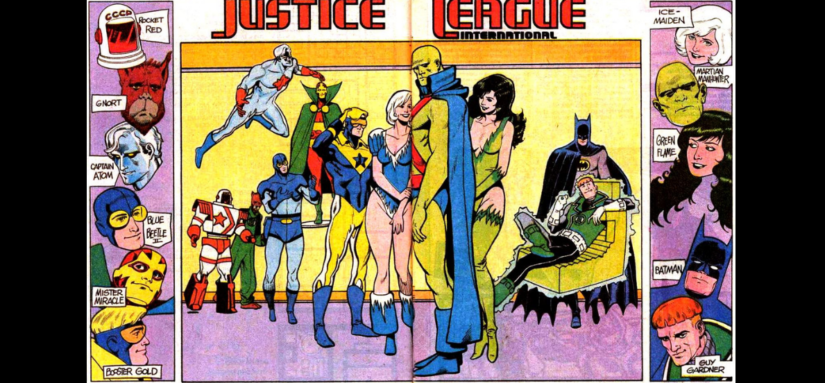
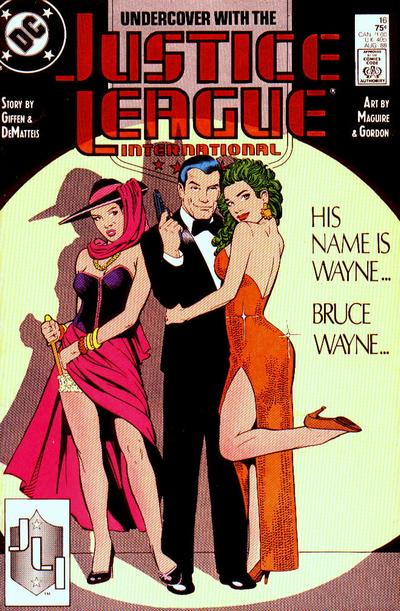
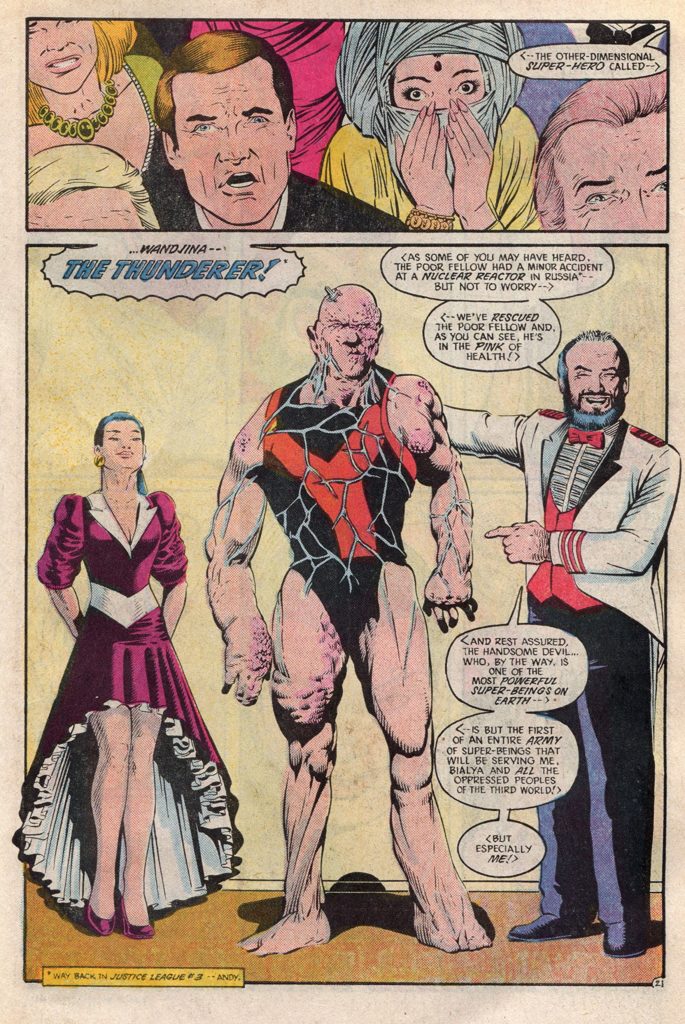
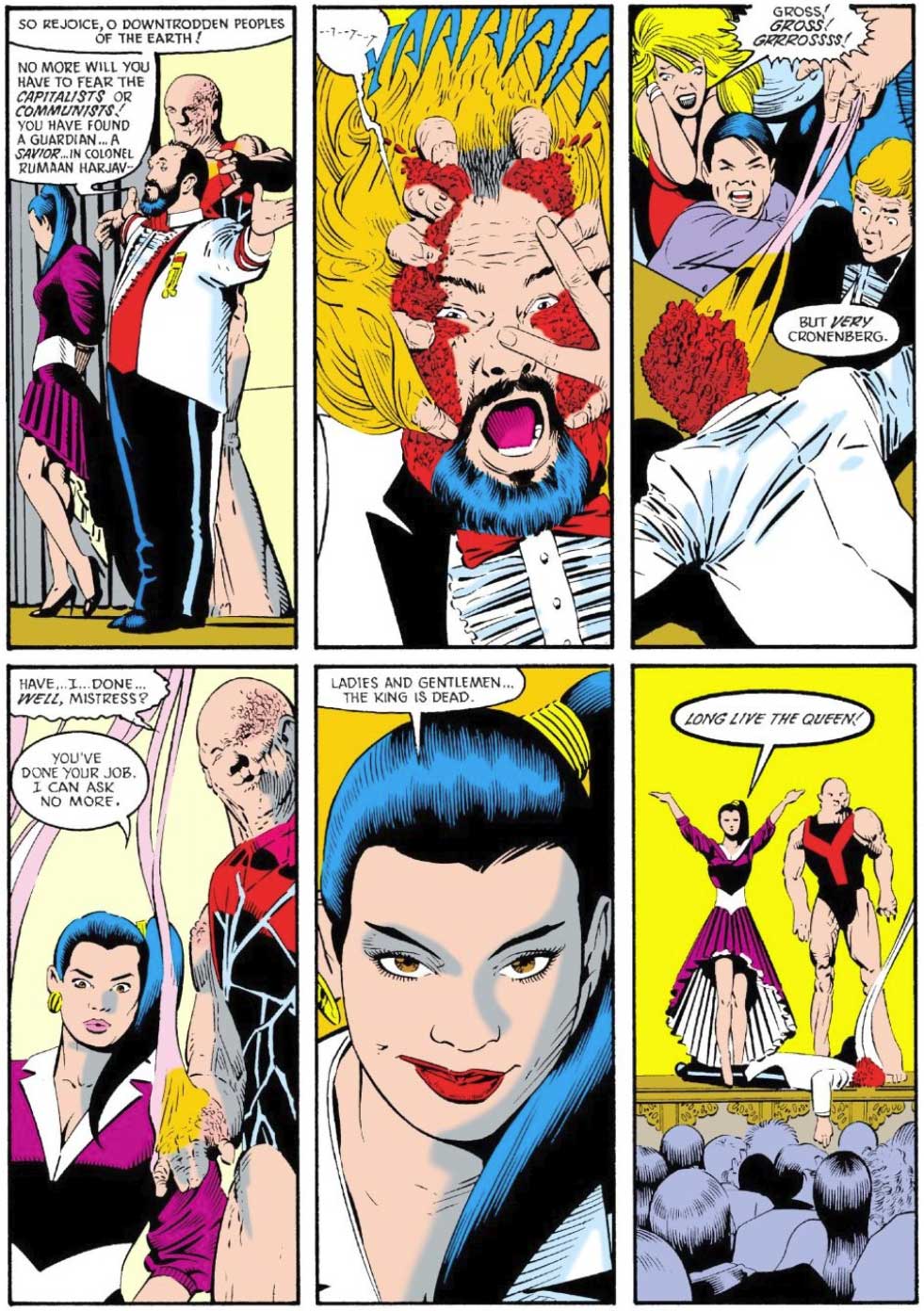
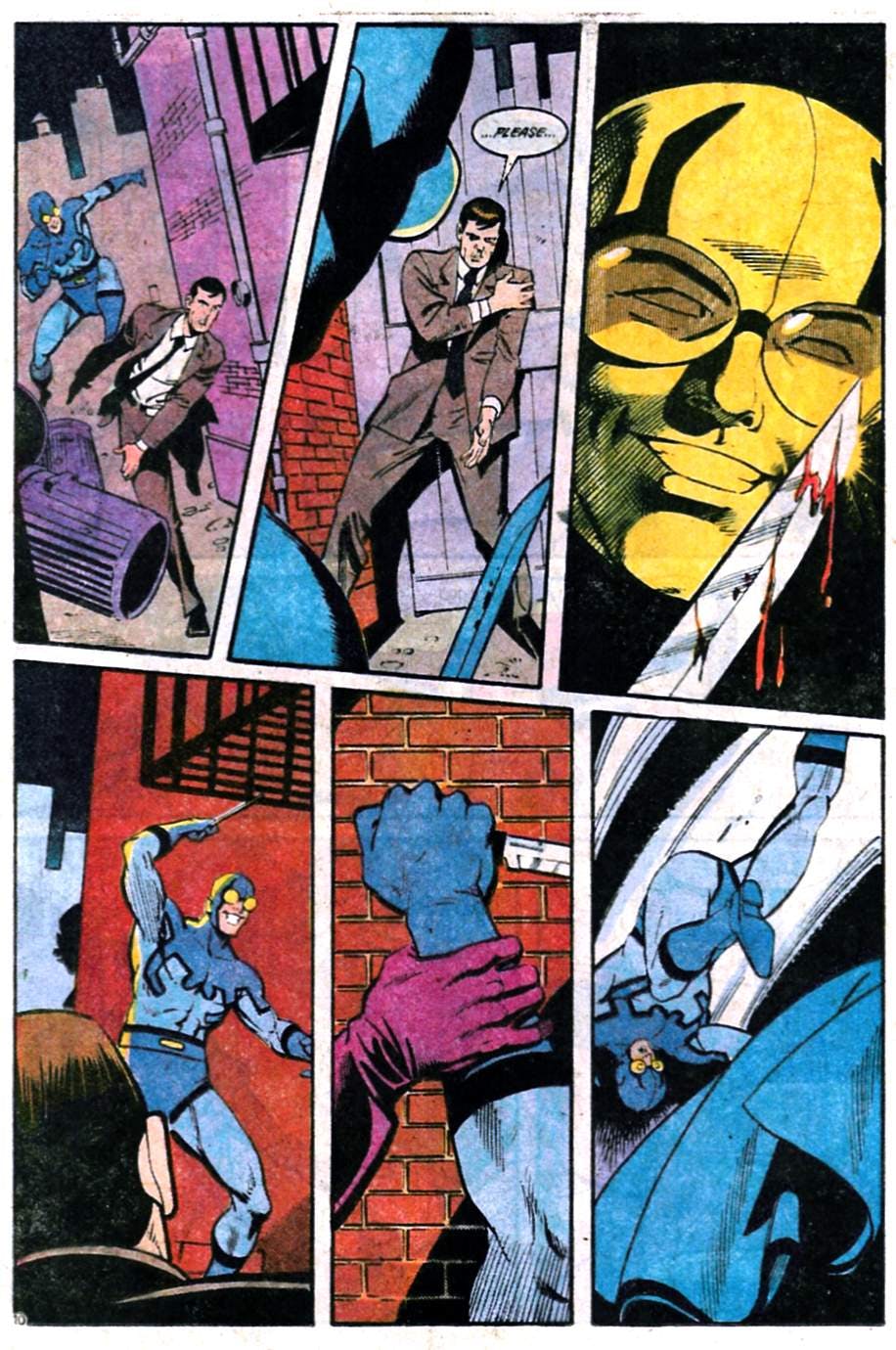
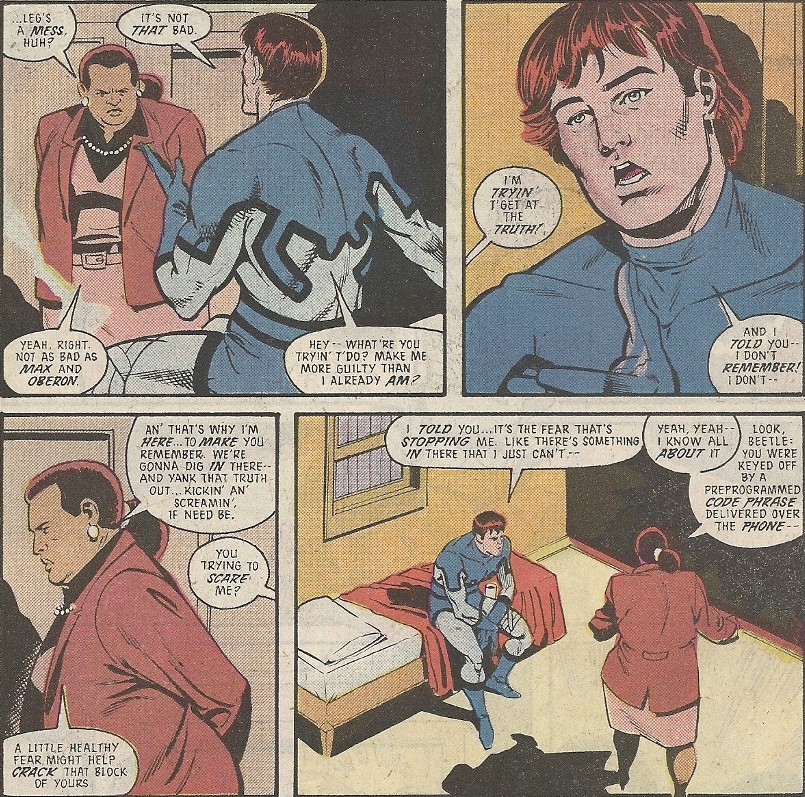

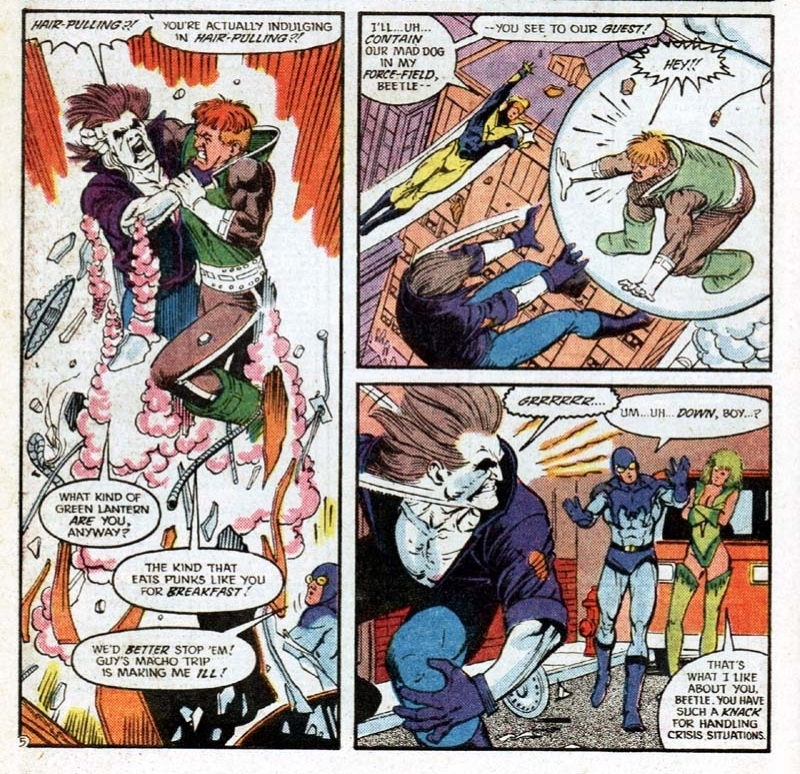
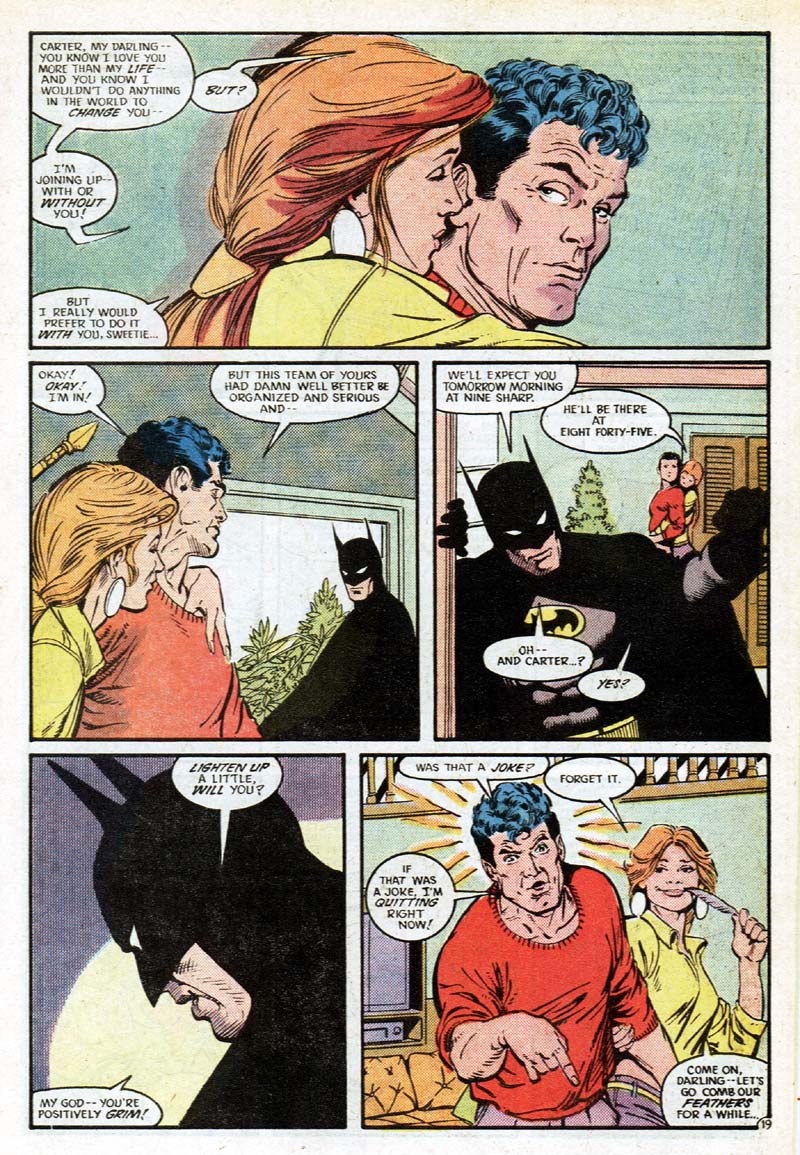
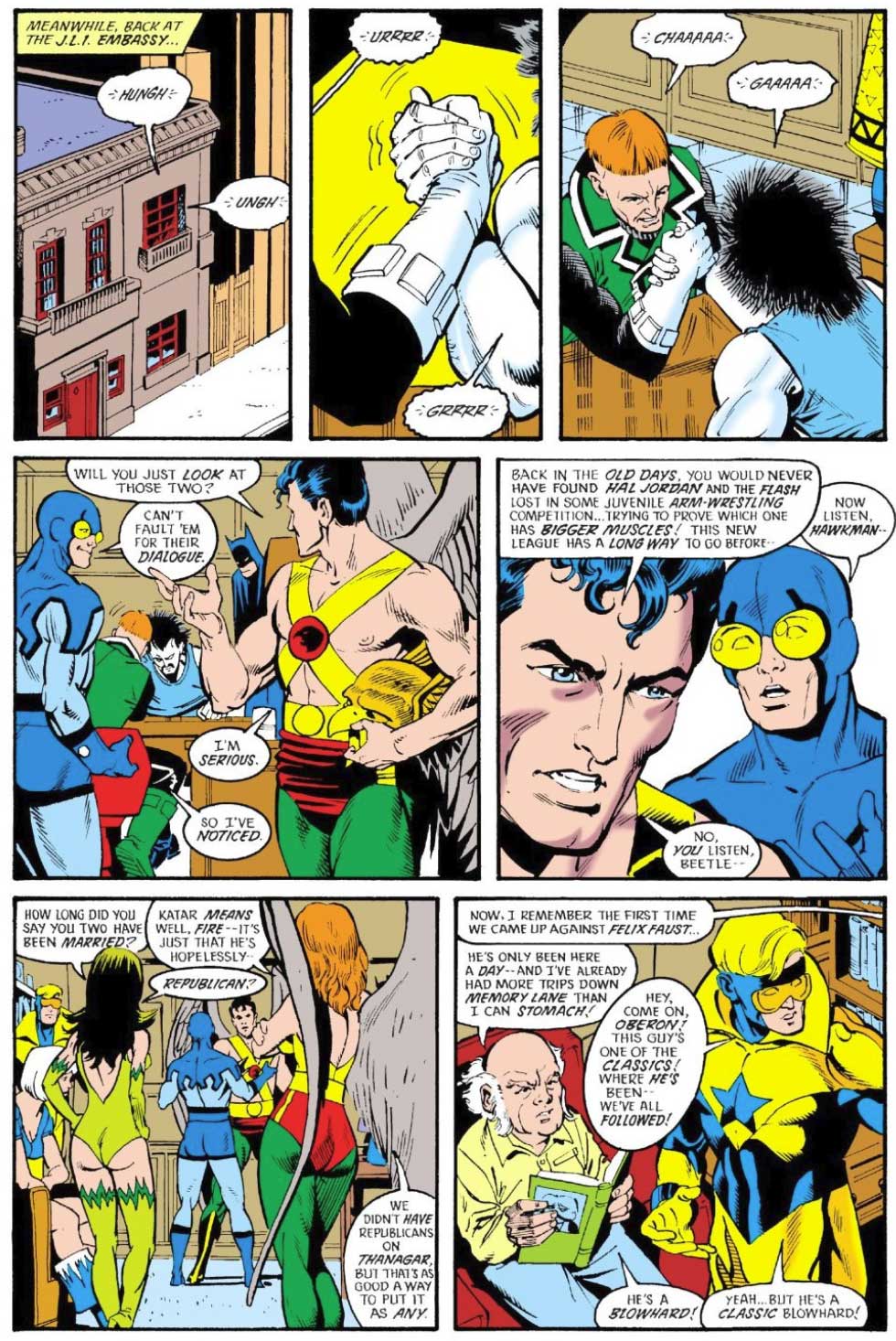
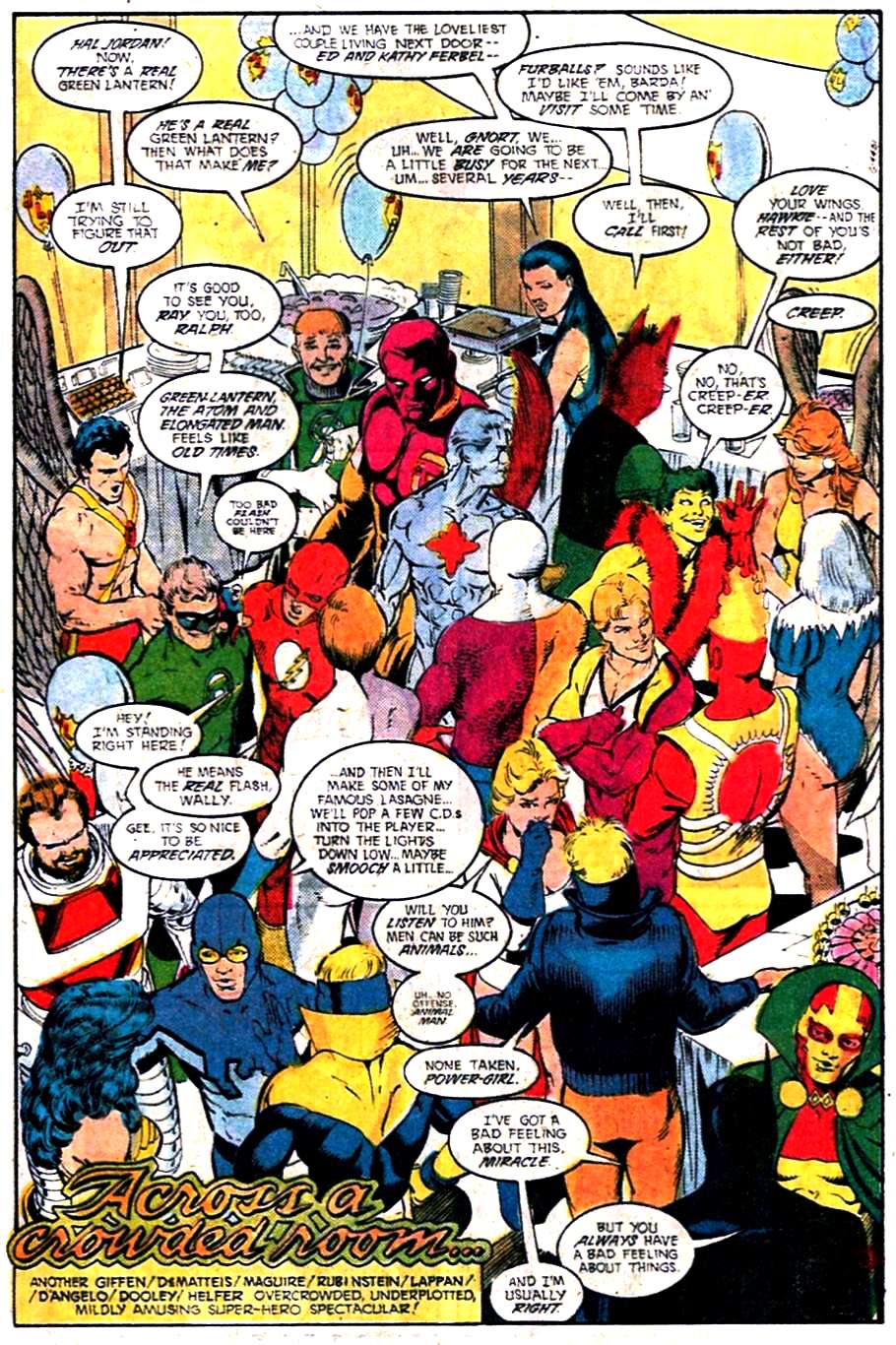
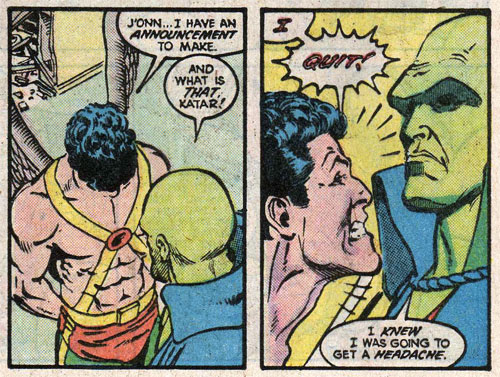
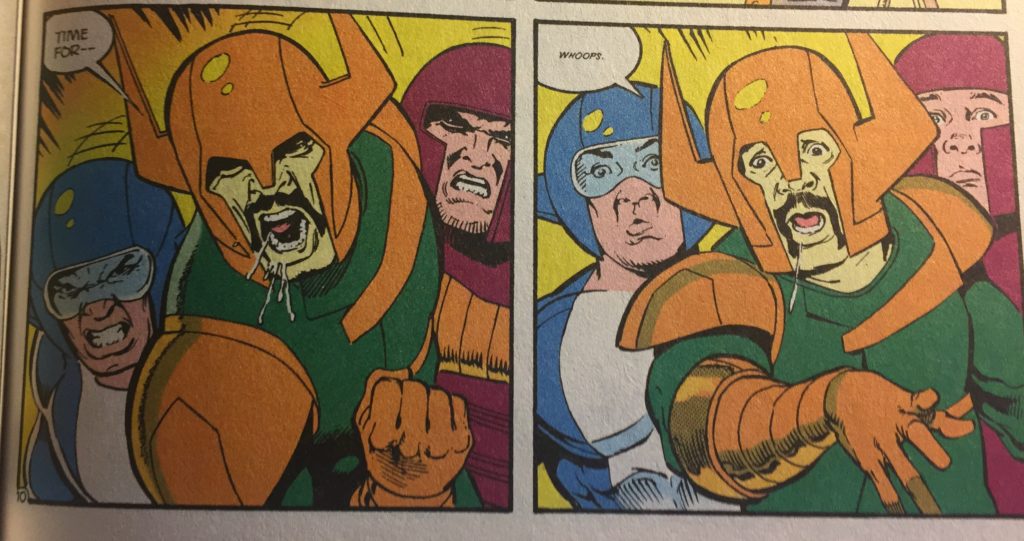
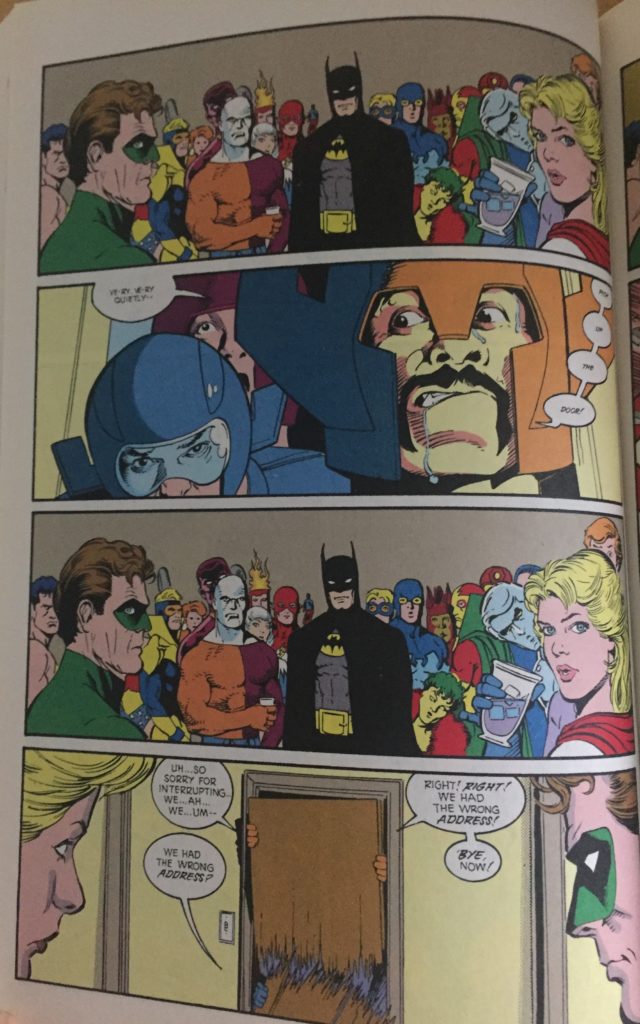
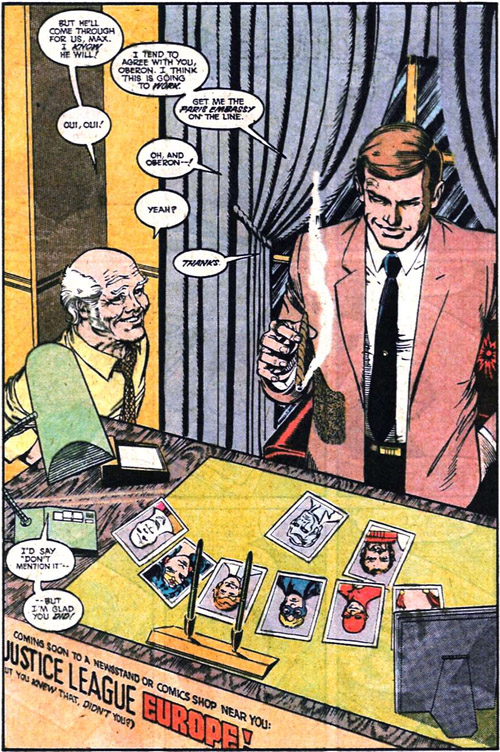
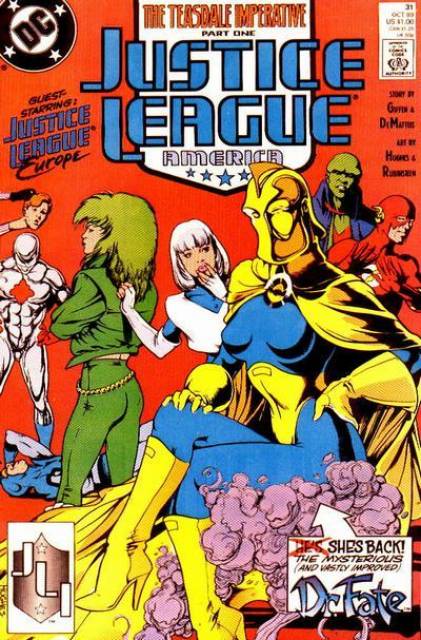

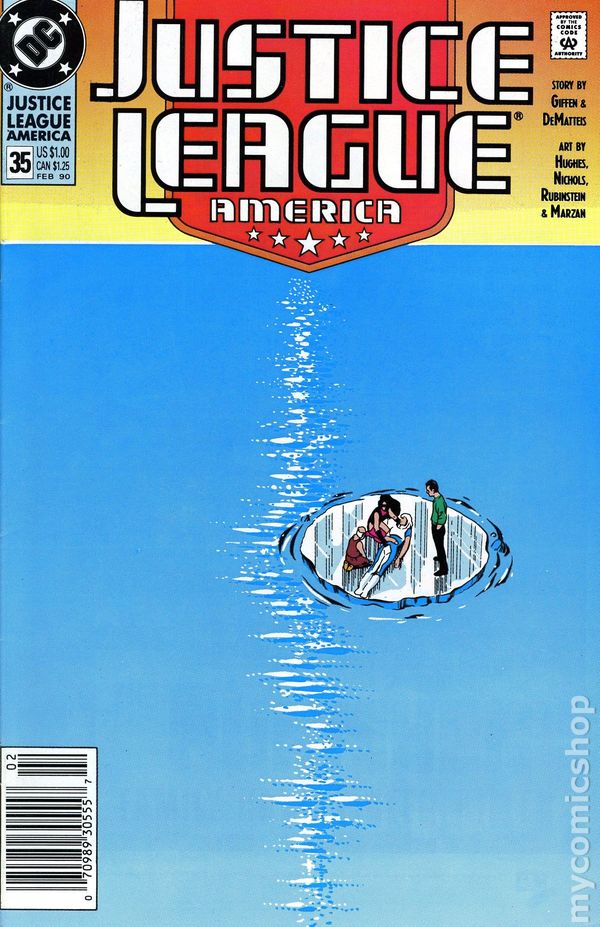
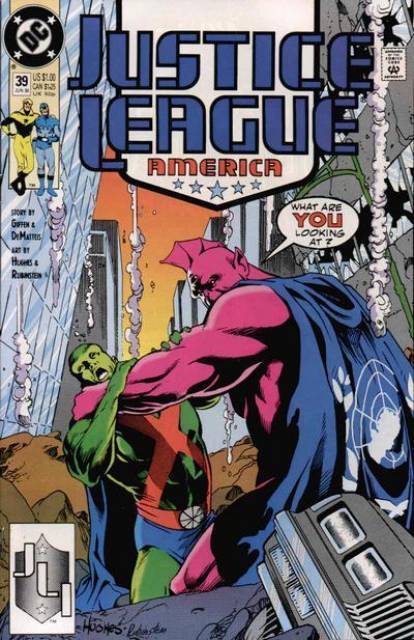
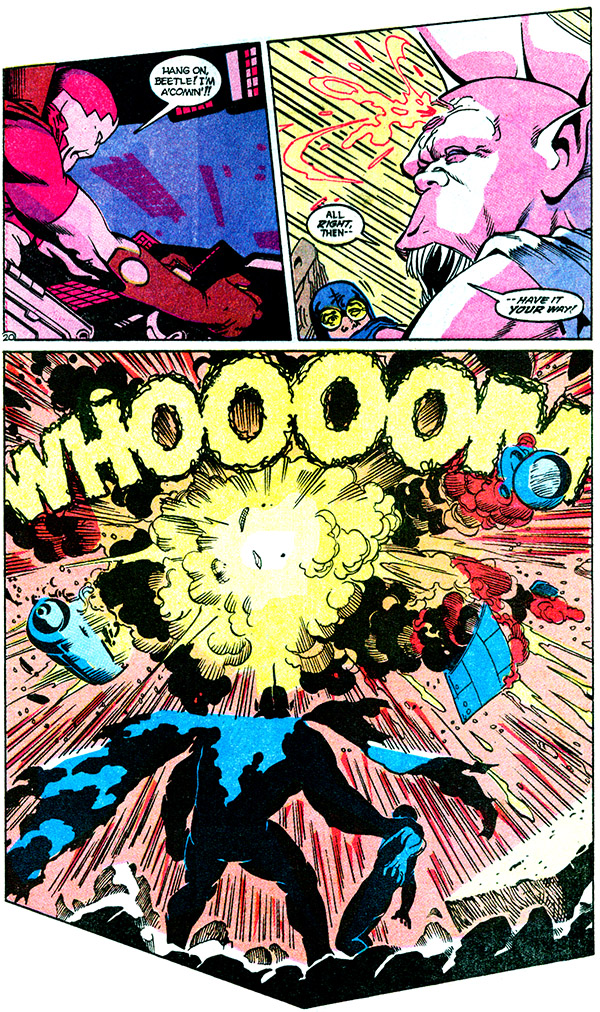
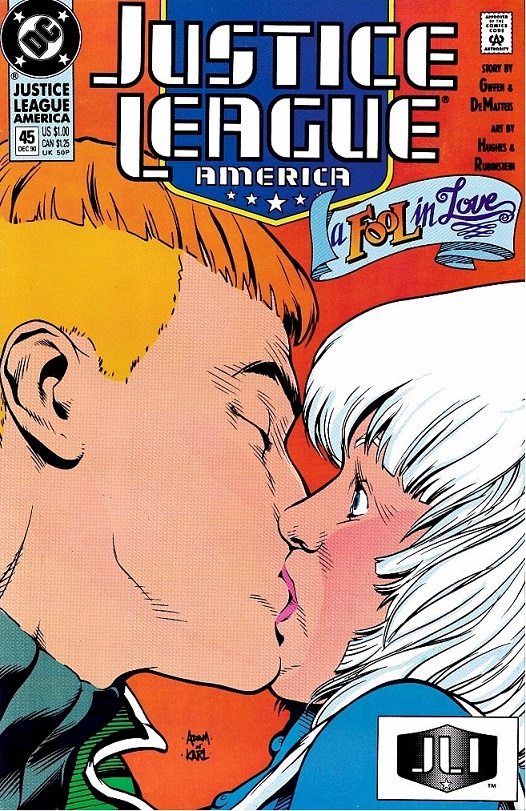
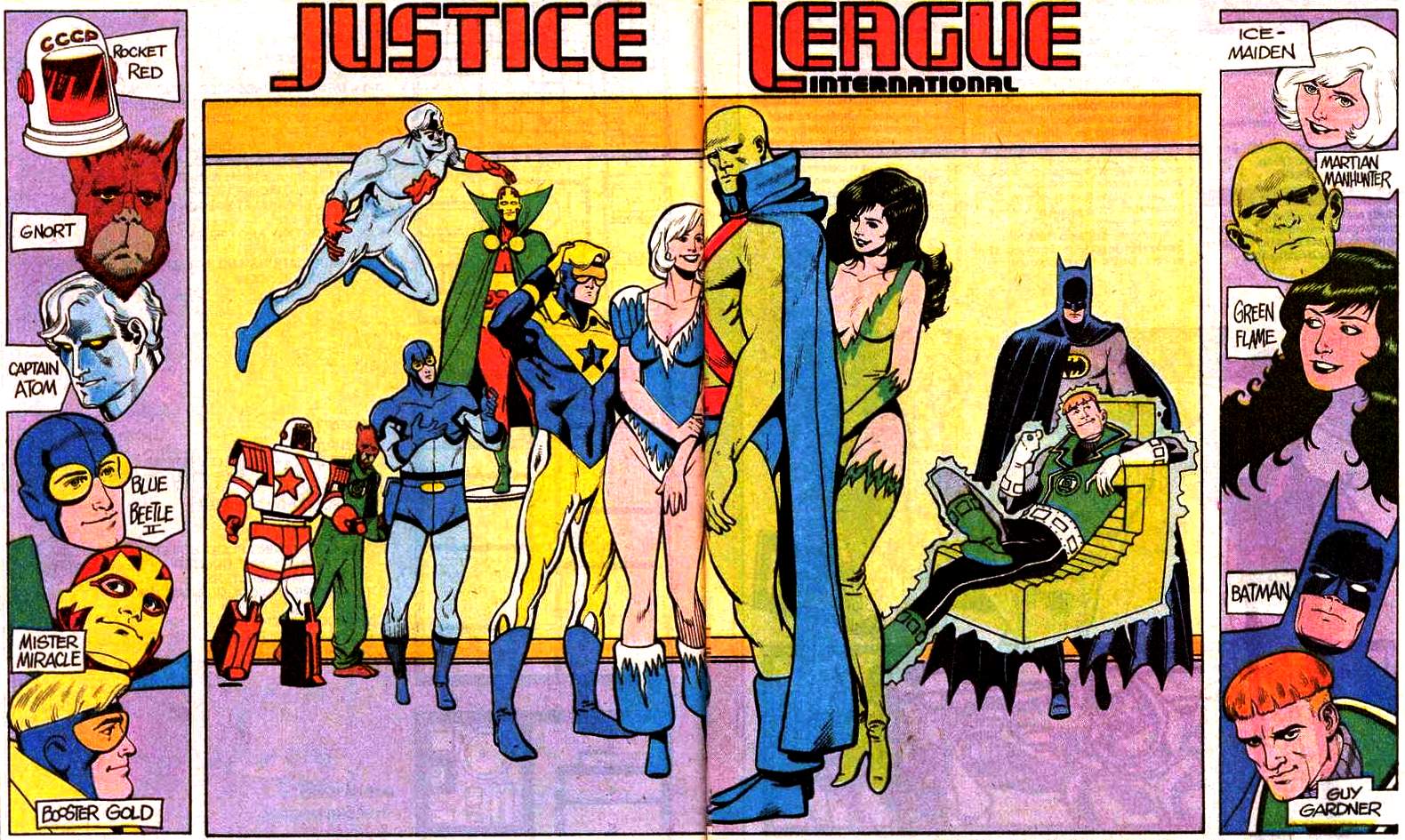
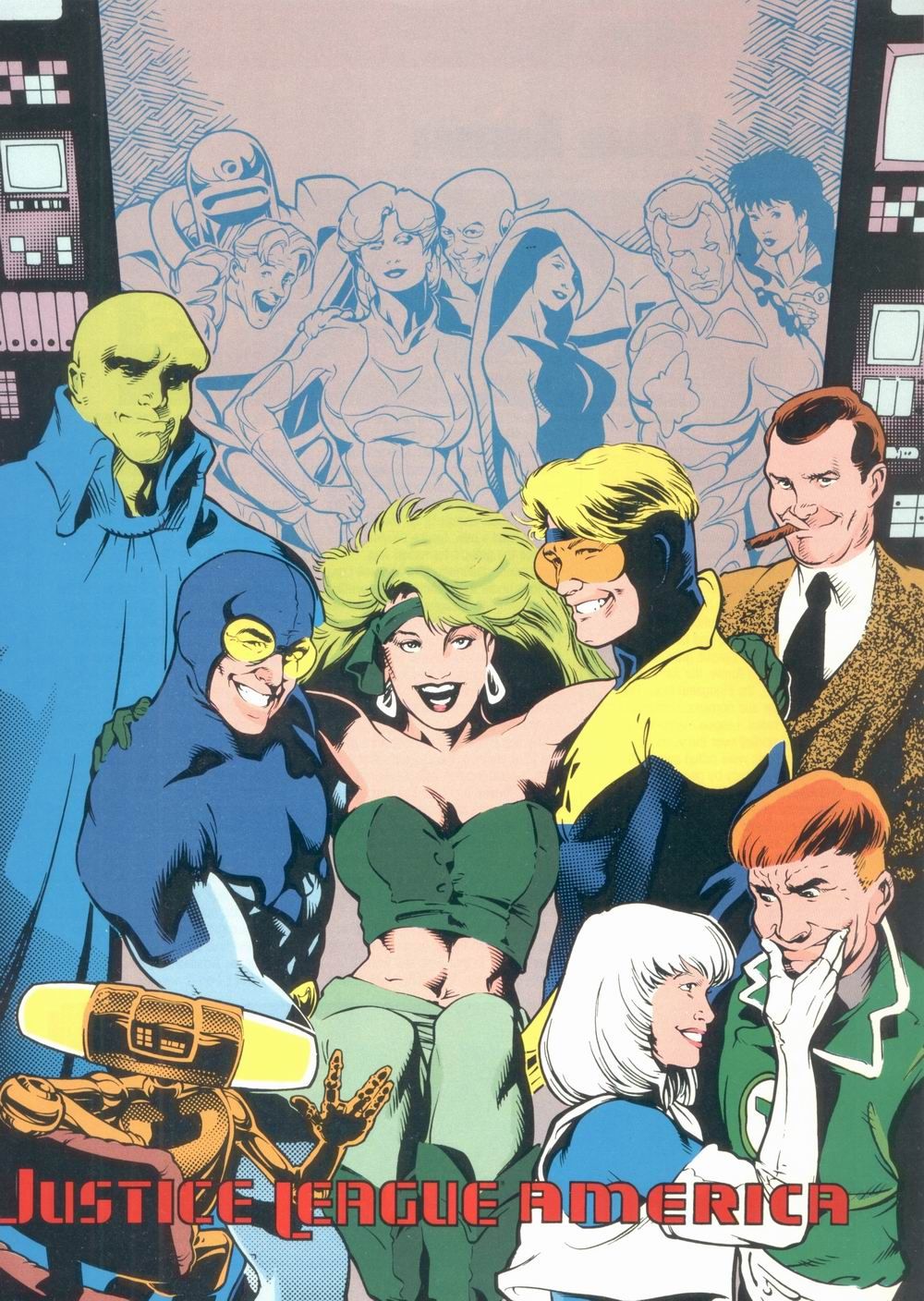
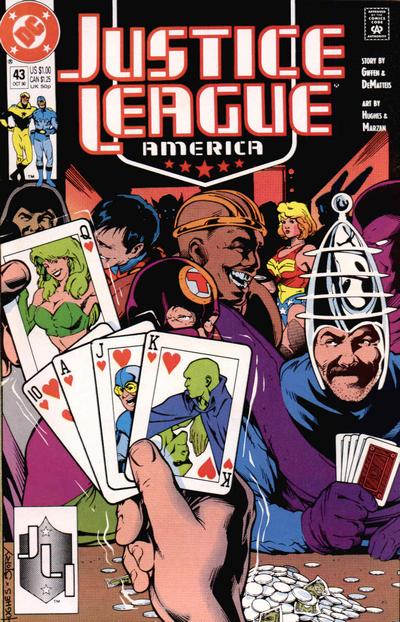
Comments are closed.